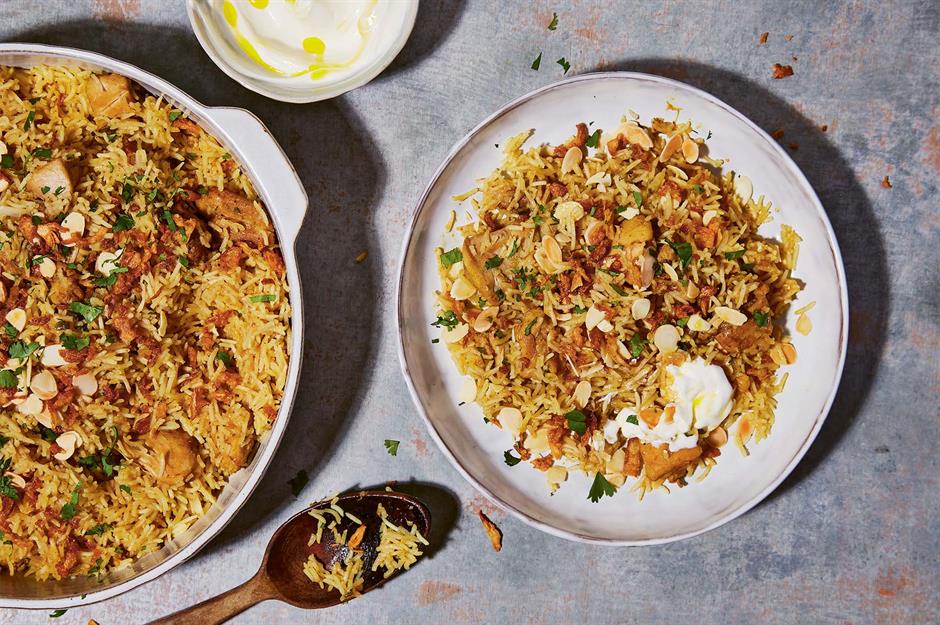Moroccan Tajine and Indian Biryani are both exotic dishes that use an array of spices to give them a distinct flavor. While Tajine is a North African dish that is typically made with meat and vegetables flavored with coriander seeds, cumin, ginger, cinnamon, paprika, turmeric, saffron, and cayenne pepper, the Indian Biryani is a mixed rice dish made with chicken, lamb, beef, fish, or vegetables that uses spices such as cumin, coriander, cinnamon, cloves, cardamom, bay leaves, star anise, mace, nutmeg, and turmeric. These dishes have distinctly different flavors, with Tajine being bold and spicy, while Biryani is more delicate and earthy due to the way the spices are used.
Introduction
When it comes to exotic cuisine, Moroccan Tajine and Indian Biryani are two of the most popular dishes out there. While they may look different and come from opposite sides of the world, the two dishes share a common thread: they both use an array of spices to give them their distinct flavor.
Spices Used in Moroccan Tajine
Moroccan Tajine is a North African dish that gets its name from the clay pot it is cooked in. The pot has a conical lid that allows the steam to circulate, creating a moist cooking environment. The Tajine is typically made with meat (lamb or beef), chicken, or fish and vegetables (onions, tomatoes, potatoes, carrots, and more) and is flavored with a blend of spices.
The spices used in Moroccan Tajine include:
- Coriander seeds
- Cumin
- Ginger
- Cinnamon
- Paprika
- Turmeric
- Saffron
- Cayenne pepper
These spices are mixed together and used to season the meat and vegetables before they are cooked in the Tajine. The result is a rich, flavorful dish that is both fragrant and spicy.
Spices Used in Indian Biryani
Indian Biryani, on the other hand, is a South Asian dish that originated in the Indian subcontinent. It is a mixed rice dish that can be made with chicken, lamb, beef, fish, or vegetables. Biryani has many variations, and each region in India has its own version. However, the common spices that go into making any biryani are:
- Cumin
- Coriander
- Cinnamon
- Cloves
- Cardamom
- Bay leaves
- Star anise
- Mace
- Nutmeg
- Turmeric
These spices are toasted before being ground and mixed into a spice blend known as garam masala. The spices are then used in the biryani to flavor the meat, vegetables, and the rice.
Flavors Clash
While both Moroccan Tajine and Indian Biryani use a similar set of spices, the way they are used and the final result is vastly different. Moroccan Tajine has a bold and spicy flavor, with a hint of sweetness from the cinnamon and nutty undertones from the cumin. The saffron used in Tajine gives it a distinct aroma and flavor that cannot be found in any other dish.
Indian Biryani, on the other hand, has a more delicate flavor with a strong essence of earthy flavors like cloves, cardamom, and cinnamon. The rice used in biryani is cooked with the spices, giving it a deep, rich color and flavor.
These distinct flavors can be attributed to the way the spices are used in each dish. In Tajine, the spices are used to flavor the meat and vegetables before they are cooked. In Biryani, the spices are toasted before being ground and used to season the rice as well as the meat and vegetables.
The Verdict
In conclusion, both Moroccan Tajine and Indian Biryani are delicious dishes that showcase the unique flavors and spices of their respective regions. While the spices used in each dish overlap, the way they are used and the final result is vastly different. Tajine is bold, spicy and sweet, while biryani is delicate and earthy.
Whatever dish you decide to try, both Moroccan Tajine and Indian Biryani are sure to please your taste buds with their exotic flavors and aromas.
